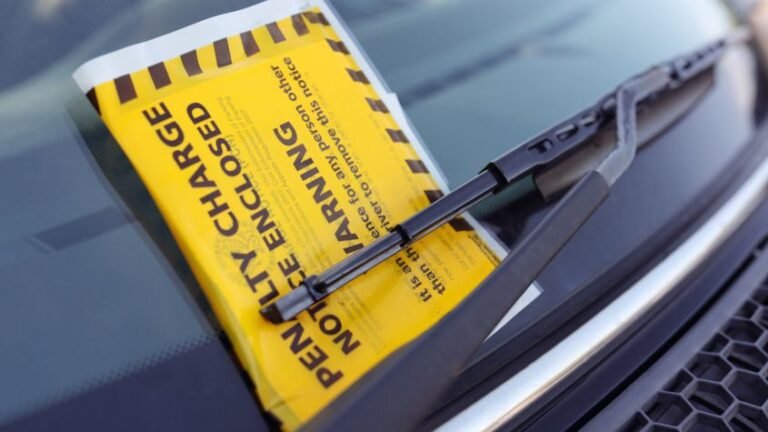

Image licensed via Adobe Stock
Think getting featured in a magazine is a mystery? It doesn’t have to be. By seeing things from a journalist’s perspective, you can transform your pitches, build better relationships — and massively improve your chances of press coverage.
If you’ve ever sent a pitch to a magazine and never heard back, you’re not alone. And if you’ve wondered what you might’ve done wrong — or what would actually get a “yes” — we hear you. Getting press can feel like a mysterious game. But once you understand how journalists work, everything starts to make a lot more sense.
At Creative Boom, we receive hundreds of emails a day. Some are brilliant. Some are thoughtful but miss the mark. And many, sadly, get lost in the noise—not because they weren’t good enough, but because they didn’t quite speak our language or simply didn’t arrive in a way we could easily act on.
Because here’s the thing: journalists are juggling a lot. We’re constantly sifting through inboxes, chasing deadlines, managing interviews, commissioning writers, reviewing layouts, writing, editing, and, yes—occasionally remembering to eat lunch. We don’t say that for sympathy; we just want to offer some context. And if you could see our inboxes? You’d understand why we’ve had to become a bit ruthless.
That said, our goal is always the same: to shine a light on brilliant creative work and the people behind it. We love what we do. We care deeply about getting your stories out there. And we genuinely want to say yes. But to do that, we need a little help from you.
Whether you’re a creative reaching out yourself or a PR trying to help someone else get noticed, understanding how journalists operate is one of the smartest things you can do. Because once you learn to think like a journo, you stop playing the guessing game. You start pitching with purpose. And your chances of getting a feature? They go way up.
So here’s a behind-the-scenes look at how we work — and how you can work with us (or any press outlet, really) to get your story heard. These tips won’t just help you with PR; they’ll also improve your client relationships.
1. The First Rule of Journalist Club? Reply Quickly.
If a magazine, newspaper, or podcast gets in touch — don’t leave them waiting. Even if you’re on a shoot or travelling, a quick “Thanks so much! I’ll send everything over by the end of the day” is better than radio silence.
This isn’t about ego or urgency for the sake of it. It’s about momentum. Journalists are on tight deadlines. If they don’t hear from you, they’ll move on. That story slot? Gone.
And no, it’s not personal if they’ve never heard of you before. Most journalists aren’t judging your profile — they’re judging the strength of your story. So reply quickly. Be helpful. Build a relationship. That’s how you become their go-to.
2. Make Their Job Easier
One of the fastest ways to get noticed — and appreciated — is to be low-maintenance. That means sending everything a journalist needs up front.
Include:
– A short, clear summary of your project or story
– A press release (optional but helpful)
– A Dropbox or WeTransfer link to high-res images
– Relevant links (website, Instagram, etc.)
– Availability for interview or Q&A
– Contact info
Avoid lines like “let me know if you’d like images” — just send them. Avoid huge attachments — always use links. The fewer emails it takes to get what we need, the more likely we are to run with it.
Our writer, Tom May, knows the reality all too well. “Imagine if 200 people physically knocked on your door every day, trying to start a conversation. That’s what it’s like for journalists,” he says. “So when someone clearly knows who I am, makes their pitch concise, and helps me say yes or no quickly — that’s the kind of email I actually respond to.”
And he’s right — email overwhelm is real. “The more efficient we are at replying to emails, the more we tend to generate,” he adds. “No one reads past the first paragraph. So ask yourself: do you really need to write a second?”
Journalist Abbey Bamford agrees — short, sharp and clear is best.
“Tell me the most interesting information in bullet points — the easier to digest, the better. We get hundreds of emails a day, so clarity is everything. Try to tie your story into a wider context or find a news hook — basically, tell us why we should care.”
She also has a word of advice on interviews and images: “Get your quotes right the first time because edits take time — and more and more people are asking to tweak them for tiny things. Oh, and make sure you have copyright for your headshots — or just let us know how to credit!”
This is the kind of stuff that really helps. If you take the time to get everything right first time, you’re already making yourself stand out — and making our lives that bit easier.
3. Don’t Cold-Pitch on LinkedIn
This might sound petty, but trust us, it matters.
Following a journalist on LinkedIn and immediately sending them a DM asking for coverage isn’t the best move. It happens all the time — and it puts us in an awkward spot. We want to be kind, but we also need to protect our time and process.
At Creative Boom, we’ve created a friendly response that goes something like this: “Hey there, thanks so much for connecting – it’s always lovely to meet fellow creatives! And I’m genuinely chuffed you thought of Creative Boom for a feature.
“As much as I’d love to help everyone individually, we get so many requests these days that we’ve had to create a proper process to manage things. It helps us stay on top of everything and ensures nothing gets missed.
If you’d like to submit your work or story, the best place to do so is here.
“I should mention we can’t guarantee coverage – it’s nothing personal at all. We strive to curate a diverse mix of stories that reflect our passion for inclusivity and the many voices that make the creative industry so vibrant. Really appreciate you reaching out – and hope we stay in touch!”
We promise we’re not trying to be gatekeepers. We just want to make sure your pitch lands in the right place — and gets the attention it deserves.
4. Be Available, Be Responsive, Be Ready
You’ve sent a pitch. A journalist replies. Amazing! But then… you go quiet for two days. The trail goes cold. The moment passes.
Here’s the reality: journalists are under pressure to move quickly. If you’re not responsive, they’ll likely forget or shift focus to another story. That’s not a reflection of your work — it’s just how the cycle moves.
So, if you want coverage, be ready. Have your assets prepared. Know your availability. Respond quickly, follow up politely if needed, and ride the wave while the story is still hot.
And if an interview is part of the process, don’t panic. “Journalists aren’t trying to trip you up — and we’re regular folk,” says Abbey. “People get really nervous before interviews, but there’s no need. We just want to have a good chat and tell your story well.”
See? We really are on your side.
5. Know Who You’re Pitching
One of the easiest ways to get ignored? Pitching something that’s totally off-brand for the publication.
Before you reach out, take five minutes to read a few recent stories. Does your work fit the tone, style, or themes? Have they covered similar projects before? Is there a particular section or writer who’d be a better fit?
Tailoring your pitch doesn’t mean faking it — it means showing you’ve done your homework. It’s respectful and professional, showing you care. And it massively increases your chances of hearing “yes”.
6. Build Relationships, Not Transactions
The best press coverage often comes from genuine relationships — not one-off pitches. When we know someone is thoughtful, responsive, and understands how we work, we’re much more likely to keep them in mind for future stories.
So check in now and again (not constantly), share great work when you’ve got it, and don’t take a “no” personally. Sometimes it’s timing. Sometimes, it’s just a packed schedule. But a respectful follow-up a few months later? That’s welcome.
The more you treat the press like a long-term collaboration, the more doors you’ll open.
Final Thoughts
We know pitching can be daunting. We know it’s hard putting yourself out there. But the truth is that most journalists want to find great stories. We’re rooting for you.
If you can take a step back and see things from our side — the pressures, the pace, the never-ending inbox — you’ll soon see how a few small changes can make a big difference. Think like a journalist, and you’ll not only get more press, but you’ll also build stronger, better relationships across your creative career.
And honestly? We’re excited to hear from you.




